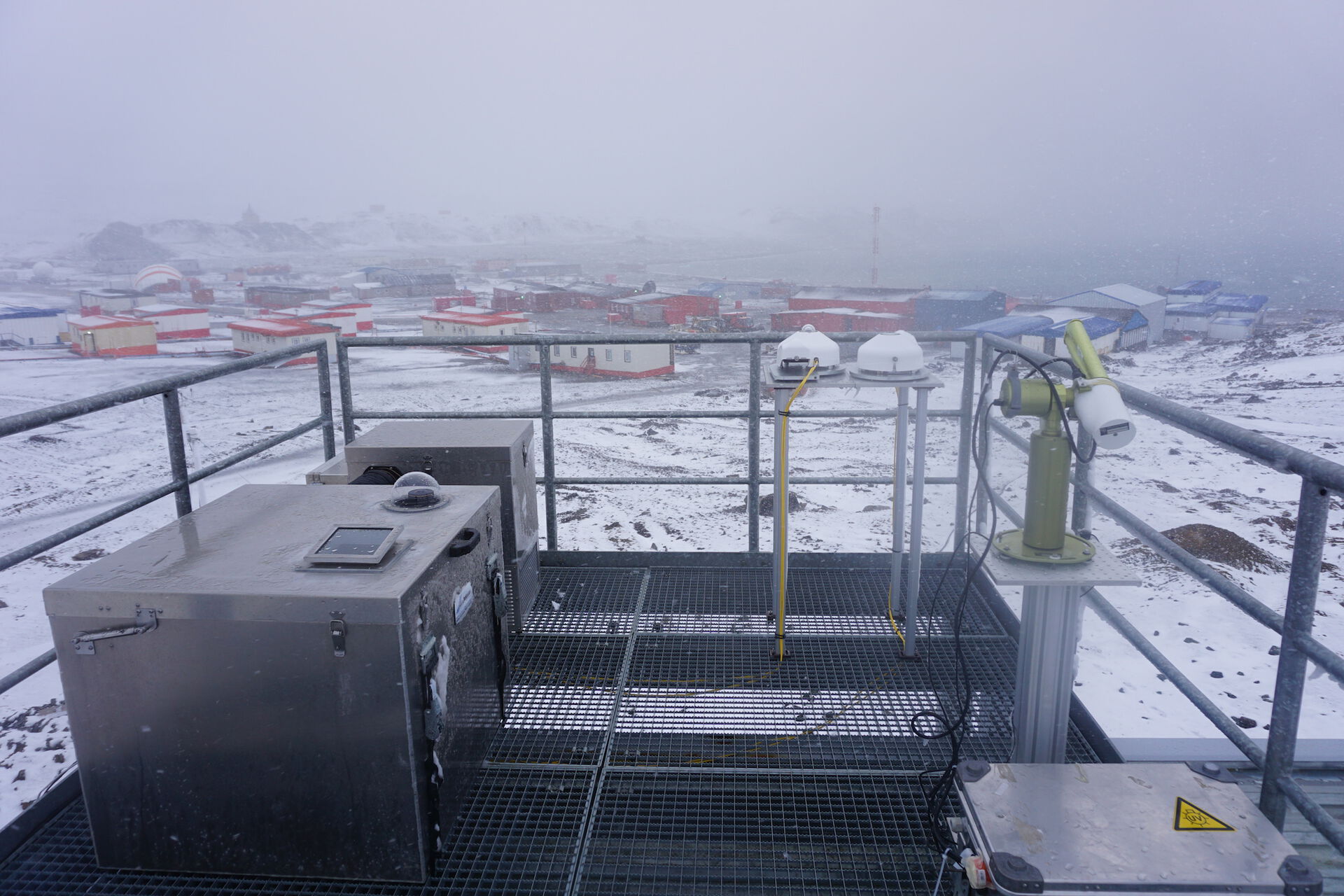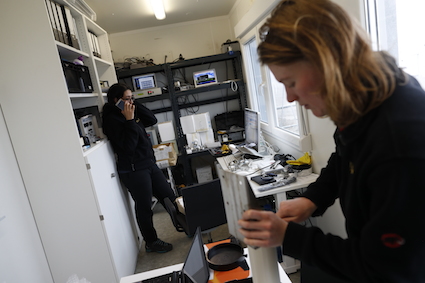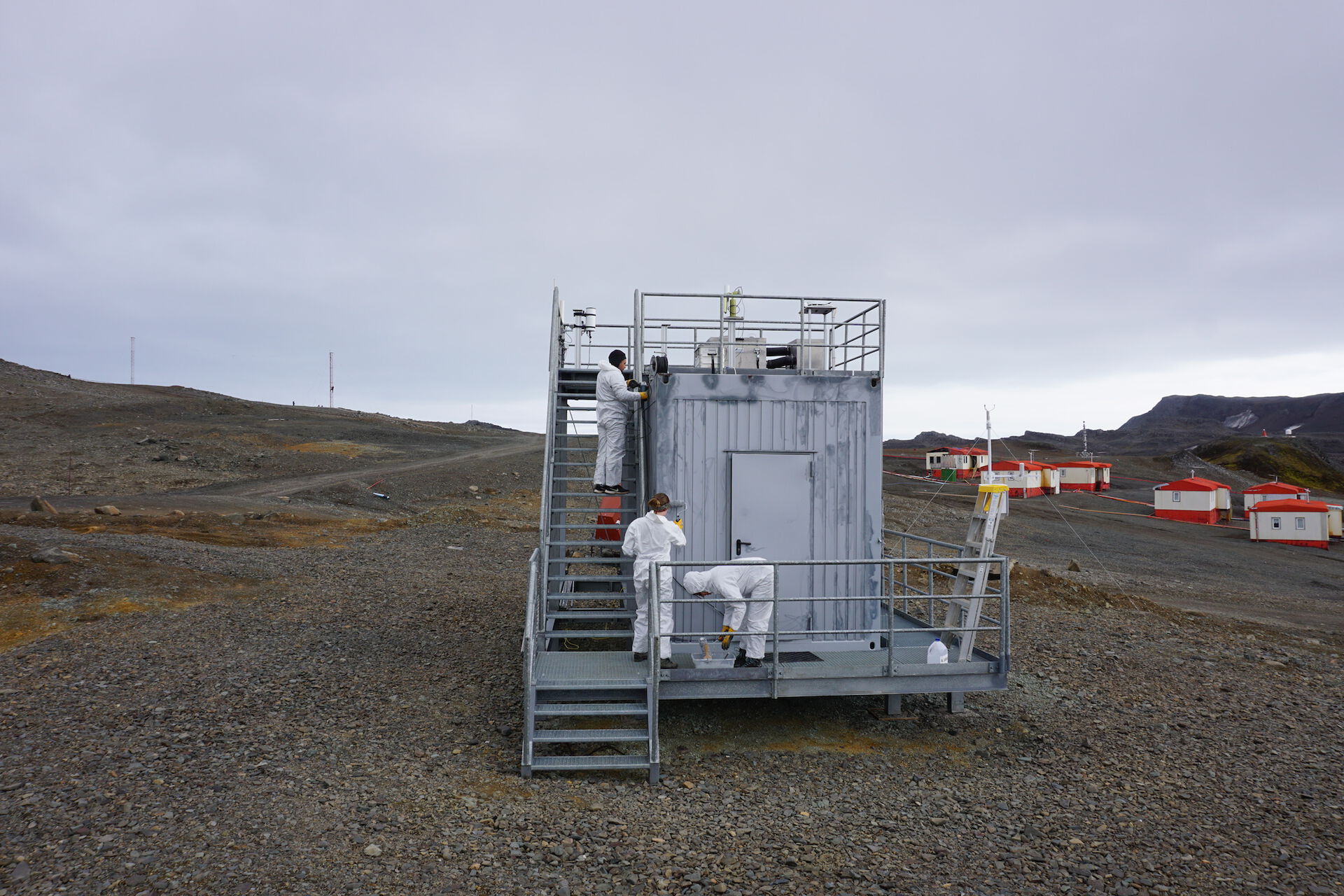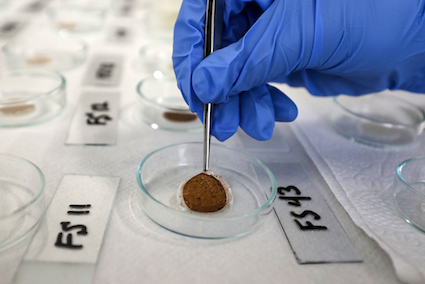Maaike's Antarctic expedition was courtesy of two research projects based at the University of Santiago, Chile. The Instituto Antártico Chileno (INACH) coordinates the scientific activities and provides the scientific support at Base Profesor Julio Escudero in Fildes Bay on King George Island, in the Chilean Antarctic Territory. Below, she explains more about the projects and includes some fantastic photos.

The first project aims to better characterize the climate system, including the atmospheric state, the cloud properties, and the surface radiation budget, on King George Island. The location of the island near the Antarctic Peninsula provides the opportunity to study the climate both over the Antarctic Peninsula and over the Southern Ocean. Climate models in this region affect climate projections at a global scale. The reflection of shortwave radiation by clouds is underestimated, thereby overestimating ocean warming, and affecting simulations of the jet stream location. Specifically, the variability of shortwave and longwave radiation is monitored to assess the atmospheric and surface radiation budget, and low- and midlevel cloud properties are monitored to asses their role in supercooled liquid clouds, which are shown to be related to climate models biases.
These observations are made by eight instruments, which are continuously running, plus a fully equipped weather station. The instruments are deployed on the Transportable Antarctic Research Platform (TARP). TARP provides a comfortable work environment to monitor and maintain the instruments in the harsh Antarctic conditions. Some of the instruments and what they measure include:
- Pyranometer – shortwave irradiance,
- Pyrgeometer – longwave irradiance,
- Sun photometer – aerosol, optical depth, and spectral direct solar irradiances,
- Spectroradiometer – spectral shortwave irradiance in the visible spectrum,
- Multifilter radiometer – direct, diffuse, and global irradiance at 12 different wavelengths,
- Infrared thermometer – surface equivalent blackbody temperature,
- LIDAR (Light Detection and Ranging) instrument – cloud and aerosol properties, and
- Cloud camera – cloud fraction and conditions.


The work, which occurred from February-March 2020, involved the calibration and leveling of the instruments for optimal performance. Furthermore, we made sure that the instruments were not affected by humidity. In addition to these tasks, there was a lot of troubleshooting: the instrument software would freeze, fragile cable connections needed repairs, failing internet connections would lead to failure of uploading data to the University of Santiago and NASA websites (as some instruments are part of a larger network which data is made available through NASA), and power cuts in the bay area would have us closely monitor the power usage of all instruments to not have any unexpected cuts to the measurements. Furthermore, we also took care of more general maintenance tasks, such as preparing TARP for winter by applying corrosion resistant paint.


The second project aims to find the spectrally resolved visible light absorption and reflectance of coastal snowpack on the Antarctic Peninsula and surrounding islands, to better predict the changes in runoff timing of these snowpacks. The reflectance properties of a surface can be defined by the surface albedo, which is the ratio of radiant flux leaving the surface and the incoming radiant flux received by the surface. Black carbon and other light-absorbing impurities, such as microalgae, affect the albedo of the snow. Most samples were brought in from a team cruising the Antarctic Peninsula, some we took ourselves on the island, and others were taken by fellow scientists on top of the Bellingshausen ice dome. The snow is filtered in the lab facilities in Escudero, through a 0.4 μm membrane filter, which captures all the impurities. The filter samples are frozen and send to a lab in Santiago for further analysis.


The third project was unfortunately cancelled after two nights on the navy ship by the Chilean government and INACH due to new measures against the coronavirus in Chile. This project would have involved retrieving and deploying meteorological instruments on the Müller ice shelf on the Antarctic Peninsula, and snow sampling on the Antarctic Peninsula and the island that the ship would pass.
For more information, stories, and photos on the fieldwork, please visit maaikeweerdesteijn.wordpress.com





